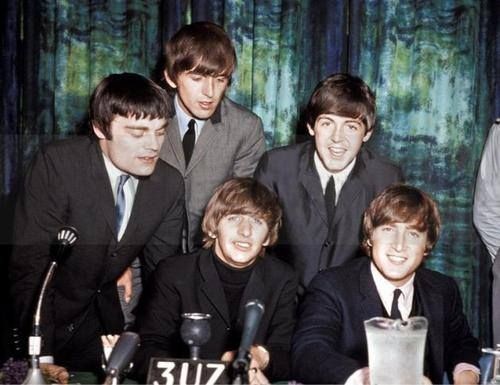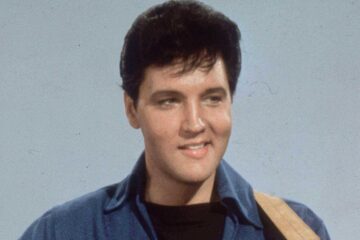Before they were selling out stadiums for tens of thousands of adoring fans, the Beatles were performing in rather racy venues across the U.K. and Europe. Aside from the questionable sleaze of the clubs they were able to book, the young musicians dealt with meager pay, shoddy sleeping arrangements, and an overwhelmingly lukewarm audience reception.
But everyone has to start somewhere, right?
The Beatles’ First Racy Venue Was An Afternoon Strip Club Affair
Years before Ringo Starr would join the Fab Four fold, John Lennon, Paul McCartney, and George Harrison performed under the moniker the Silver Beetles with a rotating cast of percussionists. When they couldn’t find a drummer for hire, McCartney opted to sit behind the kit.
Harrison recalled the first and last professional gig where McCartney played drums in The Beatles Anthology. “It was in Upper Parliament Street where a guy called Lord Woodbine owned a strip club. It was in the afternoon, with a few perverts (five or so men in overcoats) and a local stripper. We were brought on as the band to accompany the stripper, Paul on drums, John and me on guitar, and Stuart [Sutcliffe] on bass.”
The dancer walked onstage and gave the band sheet music to a piece called “The Gypsy Fire Dance.” However, no one in the Silver Beatles could read sheet music, and they quickly began asking the stripper about the tempo and the melody before giving up on the number altogether. “We decided to do ‘Ramrod’ instead because we knew it,” Harrison said.
They Cut Their Teeth In The Shady Parts Of Hamburg, Germany
The band’s tenure as live stripper accompaniment might have been short-lived in Liverpool, but it didn’t take long for the future Fab Four to find employment across the North Sea. The Silver Beatles, like many other English performers at the time, quickly found work in German cities where American military bases created an eager market for rock and roll shows.
John, Paul, George, Stu, and their new drummer, Pete Best, began working on Reeperbahn, a seedy entertainment strip in Hamburg, Germany’s St. Pauli district. The Reeperbahn commodified the rise of hypersexuality post-World War II, featuring countless bars, burlesque lounges, strip clubs, and other counterculture attractions.
The Silver Beetles started their Hamburg residency at the Indra. “The whole area was full of transvestites and prostitutes and gangsters,” Harrison said in Anthology. “But I couldn’t say that they were the audience. I don’t recall there being many people at all at first. It took a little while before word of mouth built up, by which time the church across the street made [the manager] close down because of all the noise we were making.”
The Young Performers Were Dealing With More Than Culture Shock
When the future Beatles first began performing at the racy venues of the Reeperbahn, they were in their late teens and early 20s. But the native Liverpudlians weren’t just dealing with European culture shock. The band’s German performance schedule was far more demanding than anything they had experienced in the U.K. (and not just because they had to bunk in the back of a movie theater, right next door to the toilets).
While the band might’ve been able to cherry-pick a 20-minute set in Liverpool, the Indra hired the Silver Beatles to perform eight-hour shifts at a time. With little built-in crowd and a drink menu that scared patrons away because of the price, the band had to fight for every audience member they had. “We had to actually invite the audience in because we would be playing to a completely dark and empty club,” McCartney later said in Anthology. “We were like fairground barkers. It was good training.”
Rigorous set lengths and subpar lodging arrangements aside, the work the future Fab Four put in clearly paid off. The Beatles would arrive in the States four years after performing their first poorly attended show at the Indra. From there, Beatlemania took the world by storm, marking the end of the Beatles’ “fairground barker” phase.



